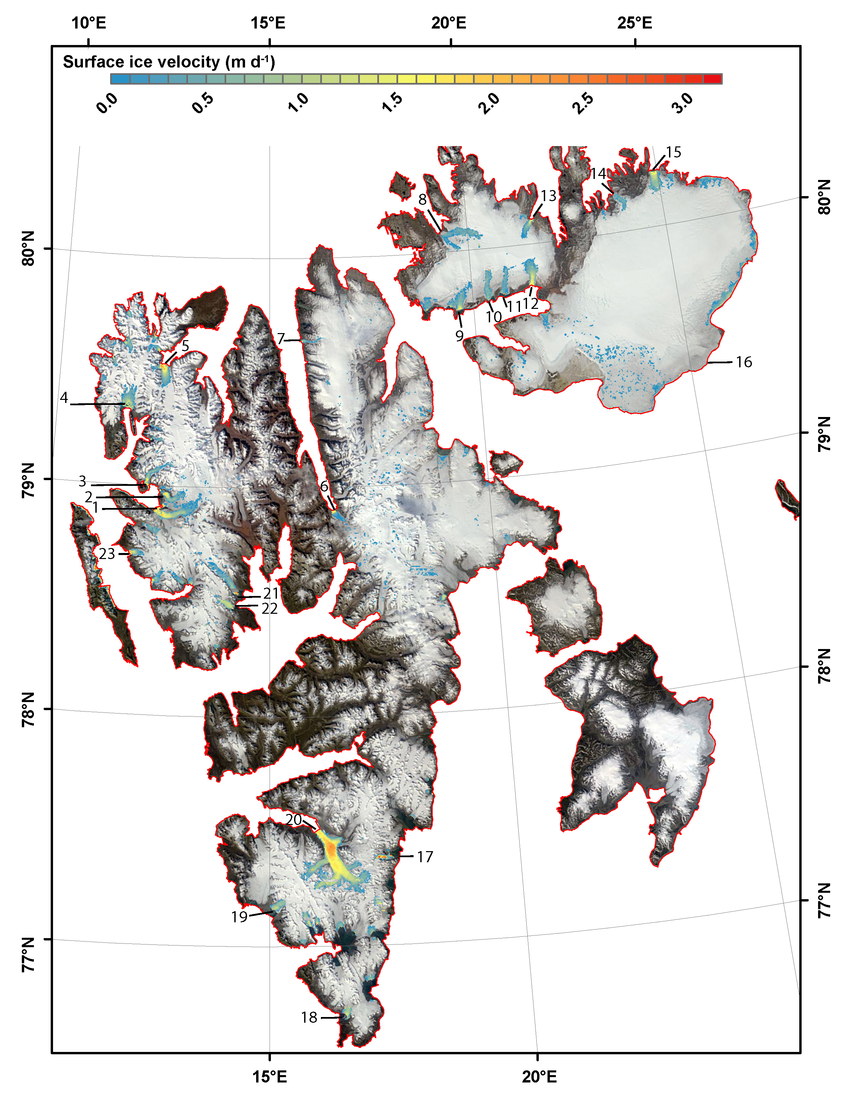Glacier dynamics play an important role in the mass balance of many glaciers, ice caps and ice sheets. In this study we exploit Radarsat-2 (RS-2) Wide Fine (WF) data to determine the surface speed of Svalbard glaciers in the winters of 2012/2013 and 2013/2014 using Synthetic Aperture RADAR (SAR) offset and speckle tracking. The RS-2 WF mode combines the advantages of the large spatial coverage of the Wide mode (150 x 150 km) and the high pixel resolution (9m) of the Fine mode and thus has a major potential for glacier velocity monitoring from space through offset and speckle tracking. Faster flowing glaciers (1.95 m d-1 - 2.55 m d-1) which are studied in detail are Nathorstbreen, Kronebreen, Kongsbreen and Monacobreen. Using our Radarsat-2 WF dataset, we compare the performance of two SAR tracking algorithms, namely the GAMMA Remote Sensing Software and a custom written MATLAB script (GRAY method) that has primarily been used in the Canadian Arctic. Both algorithms provide comparable results, especially for the faster flowing glaciers and the termini of slower tidewater glaciers. A comparison of the WF data to RS-2 Ultrafine and Wide mode data reveals the superiority of RS-2 WF data over the Wide mode data.

